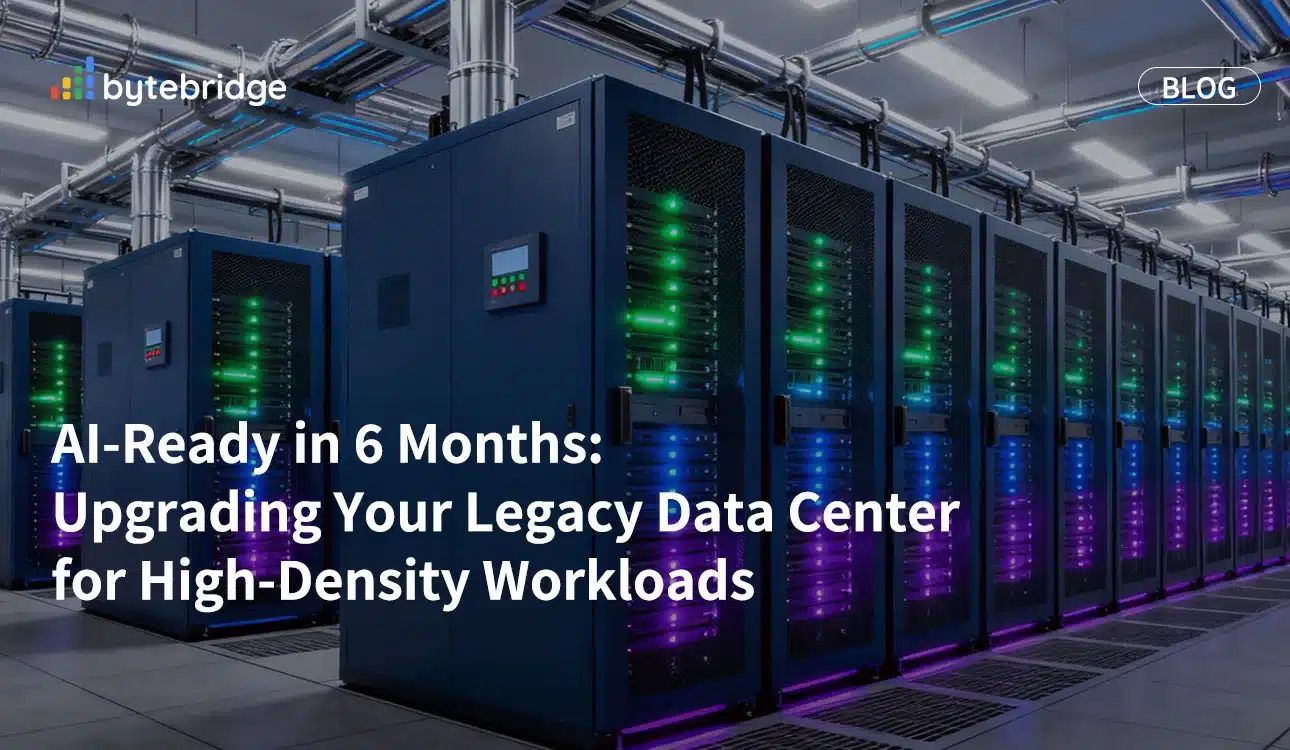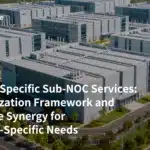The explosive growth of Artificial Intelligence is reshaping the digital landscape, revealing an uncomfortable truth: most enterprise data centers are fundamentally unprepared for the demands of AI workloads.
Where traditional cloud computing could scale out by adding servers, AI requires a completely different approach—one built on extreme power density, advanced cooling, and optimized data movement.
The transition isn’t just beneficial; it’s inevitable. By 2030, 100% of IT investment will be directed toward AI or AI-related projects . The question isn’t if you should upgrade, but how quickly you can adapt.
What “AI-Ready” Really Means
An AI-ready data center isn’t merely a facility with extra servers. It’s a purpose-built ecosystem designed to handle the unique challenges of high-performance AI workloads.
Power Density: The New Battleground
Traditional data centers typically supported 5-10 kW per rack. AI workloads have shattered these norms, now demanding up to 100 kW per rack—a tenfold increase driven primarily by dense GPU clusters . Each modern GPU can consume up to 1.2 kW, meaning a single processor accounts for roughly one-fourth the density of an entire legacy rack.
Cooling Revolution: Beyond Air Conditioning
Conventional air cooling cannot manage the thermal output of these dense configurations. Liquid cooling has transitioned from luxury to necessity , with modern high-density racks often operating on an 80/20 split between liquid and air cooling systems . This shift isn’t optional—it’s fundamental to preventing thermal throttling and maintaining performance.
Intelligent Networking: The Circulatory System
AI applications require access to vast amounts of data at extremely high speeds. Simply adding more servers doesn’t address the fundamental need for efficient data movement . The new bottleneck isn’t compute power itself, but how quickly data can flow between systems. This demands optimized network topologies, high-speed interconnects, and smart rack design to minimize latency.
Your 6-Month Upgrade Roadmap
Transforming your legacy facility doesn’t require a complete rebuild. This phased approach delivers measurable progress within six months.
Month 1-2: Assessment and Strategic Planning
Begin with a comprehensive thermal and power assessment of your current infrastructure. Identify existing capacity constraints and map AI workload requirements to specific infrastructure needs.
Simultaneously, design your new power and cooling architecture, focusing on designated high-density zones rather than attempting facility-wide upgrades. Develop a detailed project plan with clear milestones for the coming months.
Month 3-4: Power and Cooling Modernization
Upgrade electrical distribution to support targeted high-density zones, implementing modular power systems that can scale with growing demands.
Introduce liquid cooling solutions for your highest-priority AI racks, starting with hybrid air-liquid configurations that maximize efficiency without requiring complete infrastructure overhaul . These intermediate solutions can deliver 80% of the benefit for 20% of the cost of full installation.
Month 5-6: Network Optimization and Deployment
Redesign your network topology to eliminate AI workload bottlenecks, implementing high-speed interconnects and network acceleration devices.
Deploy your initial AI workload clusters in the modernized zones, establishing continuous monitoring for power usage effectiveness, thermal performance, and computational efficiency. Measure success against the baseline established in your assessment phase.
Critical Details That Make or Break Your Upgrade
Power Distribution: The Hidden Foundation
While much attention focuses on cooling, power distribution systems require equal scrutiny. High-density racks demand robust power connectivity with adequate overhead beyond nameplate ratings. Consider modern power distribution units that offer per-outlet monitoring and management, enabling precise capacity planning and alerting you to potential overload conditions before they impact operations.
Cable Infrastructure: Beyond Connectivity
AI-scale networking introduces physical challenges often overlooked in planning. High-speed cable infrastructure must support immense data transfer rates without signal degradation. Proper cable management becomes critical not just for organization but for maintaining air-flow pathways in mixed cooling environments. The choice between active and passive cabling can impact both power consumption and reliability.
The Flexibility Imperative
The most successful AI-ready facilities embrace modular, adaptable designs that can evolve with changing requirements. Rather than locking into fixed configurations, implement solutions that allow for technology refreshes and scaling without complete redesigns . This approach future-proofs your investment against the relentless pace of AI hardware evolution.
From Legacy to AI-Ready
The transition to an AI-ready data center isn’t merely a technical upgrade—it’s a strategic transformation that positions your organization to harness the full potential of artificial intelligence. By focusing on power density, cooling efficiency, and data movement, you can systematically address the core limitations of legacy infrastructure.
The six-month timeline is ambitious but achievable when you prioritize targeted upgrades over wholesale replacement. Begin with a honest assessment, implement changes in phases, and always design with future scalability in mind. The result will be a data center that doesn’t just support AI workloads but optimizes them for maximum performance and efficiency.
The AI era waits for no one. Your transformation begins now.
Read more
ByteBridge Launches Industry’s First Foundational Liquid Cooling Certification (FLCC) Program
Liquid Cooling Training: Bridging the Knowledge Gap in AI Data Centers
Direct-to-Chip Cooling Explained: The Future of Liquid Cooling in AI Data Centers
- Liquid Cooling System Architectures and Solutions for High-Density Data Centers






